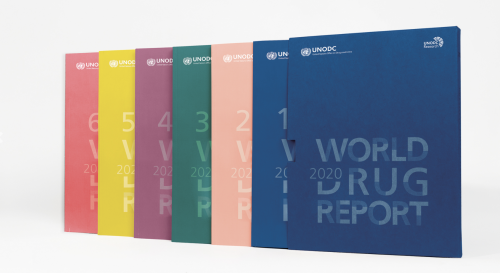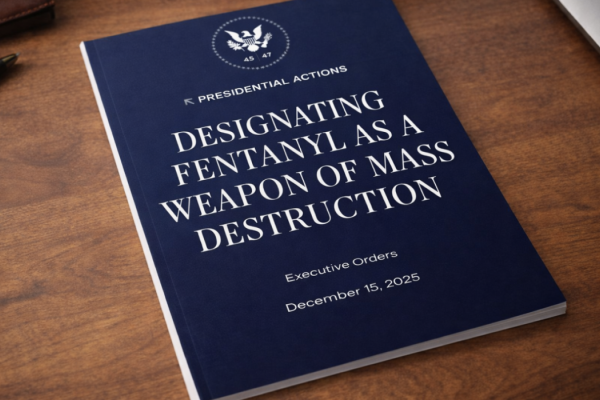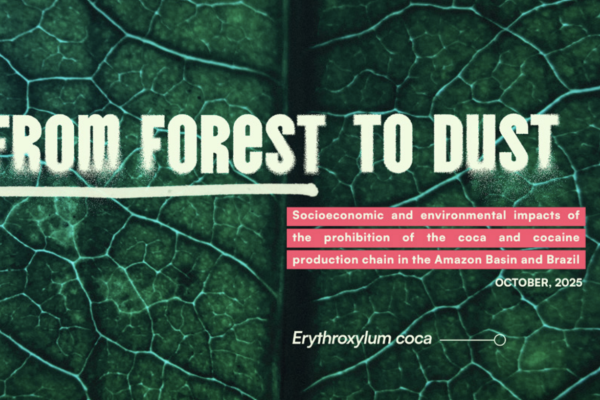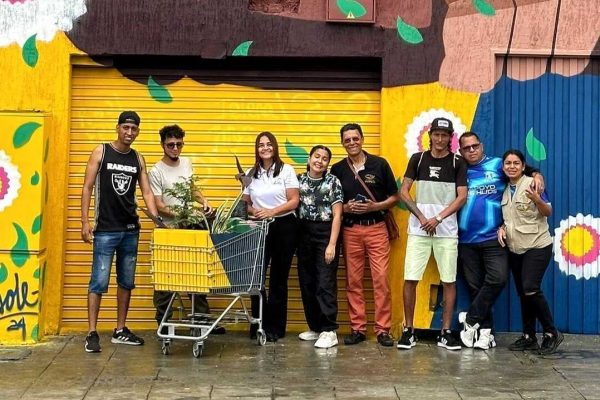28th June 2020
The World Drug Report is the annual analysis from the United Nations Office on Drugs and Crime (UNODC) on the state of the ‘global drug problem’. The report assesses developments in illegal drug use and drug market dynamics, and also includes special thematic chapters, exploring a particular issue in more depth. This year includes an analysis of the potential impacts of the COVID-19 pandemic.
Here are some key takeaways from this year’s report:
1. Prohibition doesn’t work, has never worked, and won’t work
Contrary to the stated goal of delivering a ‘drug free world’, the report highlights, once again, that hundreds of millions of people around the world are using drugs. Indeed, the UNODC estimates, probably conservatively, that 269 million people used illegal drugs in 2018, 59 million more than in 2009. This was in part due to population growth — but, even accounting for this, prevalence of drug use is up significantly, from 4.8% to 5.4% over the past decade. For a policy paradigm focused on reducing use and eradicating drug markets, this is evidence of a quite staggering failure, despite the ever growing resources poured into enforcement.
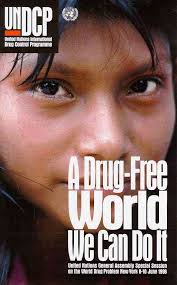
If criminalisation and incarceration does not prevent people producing, supplying and using drugs — which this report, along with all of its predecessors, has shown to be the case — then prohibition does nothing to protect the right to health. The logical, but absent, conclusion is for drug law reform, not more of the same.
2. A telling silence on human rights abuses
The World Drug Report is a peerless and hugely useful resource on statistics for drug production and consumption worldwide. Critiques of the report are commonly focused on what is absent; that the report is only telling half the story. Perhaps most glaringly, it again remains silent on the devastating impacts of drug policy on human rights. It is the statistics that it does not cite that are most telling: the number of state executions and extra-judicial killings of people involved with drugs; the scale of police brutality and state-endorsed torture in response to perceived (or purported) drug offences; the mass incarceration, and the denial of access to even basic treatment and harm reduction.
The UNODC has identified human rights abuses as one of the ‘unintended consequences’ of drug enforcement, but they can no longer be described as unintended: they are well understood and well-documented. The UN human rights agencies and Special Rapporteurs have chronicled them in more exhaustive detail. Human rights sit at the core of the UN charter, and the new UN common position on drugs (agreed by the heads of all 31 UN agencies last year, including the UNODC) opens by stressing ‘our strong commitment to supporting Member States in developing and implementing truly balanced, comprehensive, integrated, evidence-based, human rights-based, development-oriented and sustainable responses to the world drug problem’, and specifically calls on member states to ‘ensure the respect for the dignity and human rights of people who use drugs in all aspects of drug and social policies’.
So the human rights void in the UN’s flagship World Drug Report feels particularly acute, receiving only a token mention as a key cog of sustainable development in this issue. The horrific human rights abuses perpetrated under the banner of the war on drugs cannot be ignored, and the World Drug Report should not be complicit in this. It should not fall to civil society coalitions to produce Alternative World Drug Reports, or Shadow Reports to tell the full story and make up for UNODC shortcomings. As we have long demanded, the World Drug Report should routinely and systematically chronicle these abuses as part of its core UN mandate, and acknowledge they are not distinct from punitive enforcement-led drug policies, but are a clear consequence of them.
3. The voice of civil society is becoming more evident
It is also important to acknowledge how the World Drug Report has evolved over the years. Seasoned readers have observed how the more critical and nuanced civil society discourse has increasingly infused the World Drug Report’s analysis — reflecting the growing presence and influence of civil society on the UN stage and in high level drug debate. The key source of data for the World Drugs Report has historically been the Annual Report Questionnaires completed by member states themselves. As well as limitations in the scope of the questions (that are agreed by consensus amongst member states), the World Drug Report has historically marginalised or ignored non-government analysis from academic sources, ‘grey literature’ from civil society, and even other UN agency analysis.
This seems to be changing, albeit belatedly and in an ad hoc fashion. Certain arguments long made by civil society organisations, but perhaps unfavourable to more hawkish ‘war on drugs’ narratives, are now finding their way into some of the text. By way of example, the new report acknowledges that illegal drug markets are not inherently violent, and how drug law enforcement may itself cause or exacerbate drug market violence:
‘Large-scale organized crime activities including international drug trafficking can take place without outbursts of violence when stable criminal structures are in place. In the short run, the presence and level of violence is dependent not so much on the quantities trafficked as on certain changes that produce instability in the balance of power between organized crime groups, such as...law enforcement measures that weaken one group relative to another.’ - World Drug Report 2020
This is an analysis that has long been highlighted by organisations such as the Center for Drug Policy Evaluation, Christian Aid, TNI, The Global Commission on Drugs, MUCD, and many others. It is welcome that it is beginning to be acknowledged, rather than ignored.
4. Acknowledging legal regulation as a drug policy option
For the first time, the report contains a section devoted to legal regulation, providing in depth analysis of cannabis regulation models in Uruguay, USA and Canada. While not supporting these approaches, acknowledging their existence as an approach to drug policy is a valuable development. Here too, the voice of civil society organisations is more evident, with this year’s report the first ever to cite Transform, for our research on cannabis regulation in Canada.
The nuances of regulation are reflected, and attempts are made to analyse successes and failures (though, unfortunately, the report remains light on acknowledging the former). Going forward, this kind of analysis should help inform the development of new drug policy, rather than simply be used, as it has historically, to defend the failing status quo.
Authors: Harvey Slade and Steve Rolles

